
|
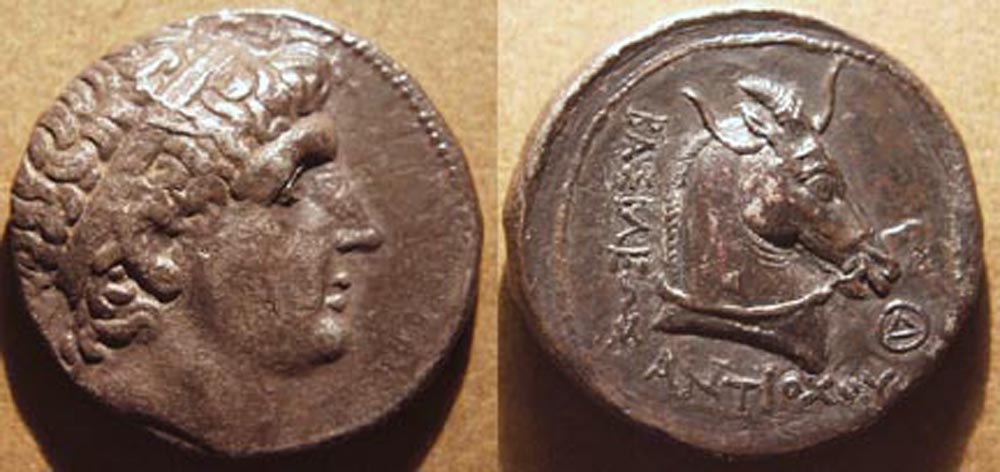
|
Antiochos I
Silver Tetradrachm, c. 270 BCE
Weight:16.37 gm., Diam:25 mm., Die axis:6h
Diademed, bust of Antiochos right/
horned horsehead right
Greek legend: BAΣIΛEΩΣ ANTIOXOY (of King Antiochos)
Ref: MIG 54b |
 |
This coin series features the head of Bucephalus, Alexander's famous horse, on the reverse. It may have been issued while
Antiochos was Seleucos's governor in Bactria, since Seleucos issued a series with a similar reverse. Even though the coin names him as king, Antiochos may still have been
subordinate to his father. Note the Δ monogram, indicating this coin was minted in Ai-Khanoum.
|
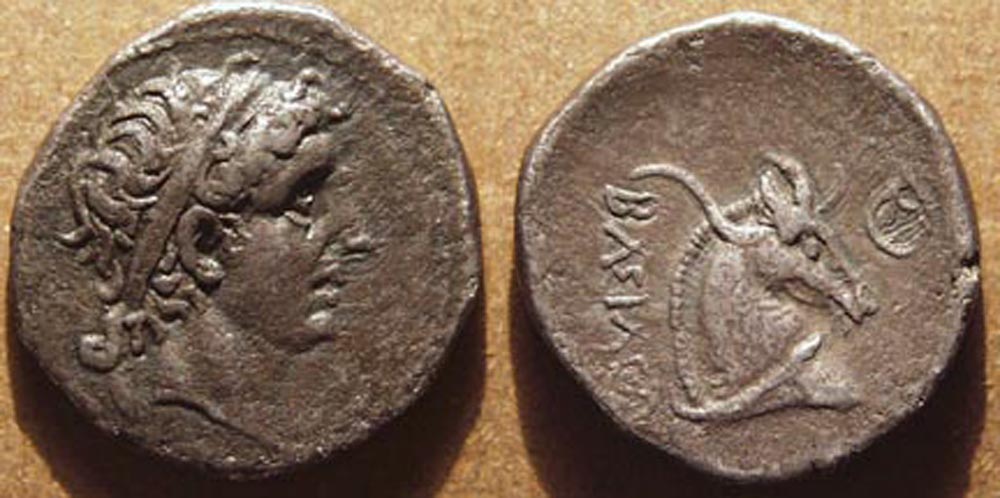
|
Antiochos I
Silver Drachm, c. 270 BCE
Weight:4.05 gm., Diam:16-17 mm., Die axis:6h
Diademed, bust of Antiochos right/
horned horsehead right
Greek legend: BAΣIΛEΩΣ ANTIOXOY (of King Antiochos)
Ref: MIG 55b |

|
Antiochos I
Silver Hemidrachm, c. 270 BCE
Weight:2.06 gm., Diam:13 mm., Die axis:6h
Diademed, bust of Antiochos right/
horned horsehead right
Greek legend: BAΣIΛEΩΣ ANTIOXOY (of King Antiochos)
Ref: MIG 56a |
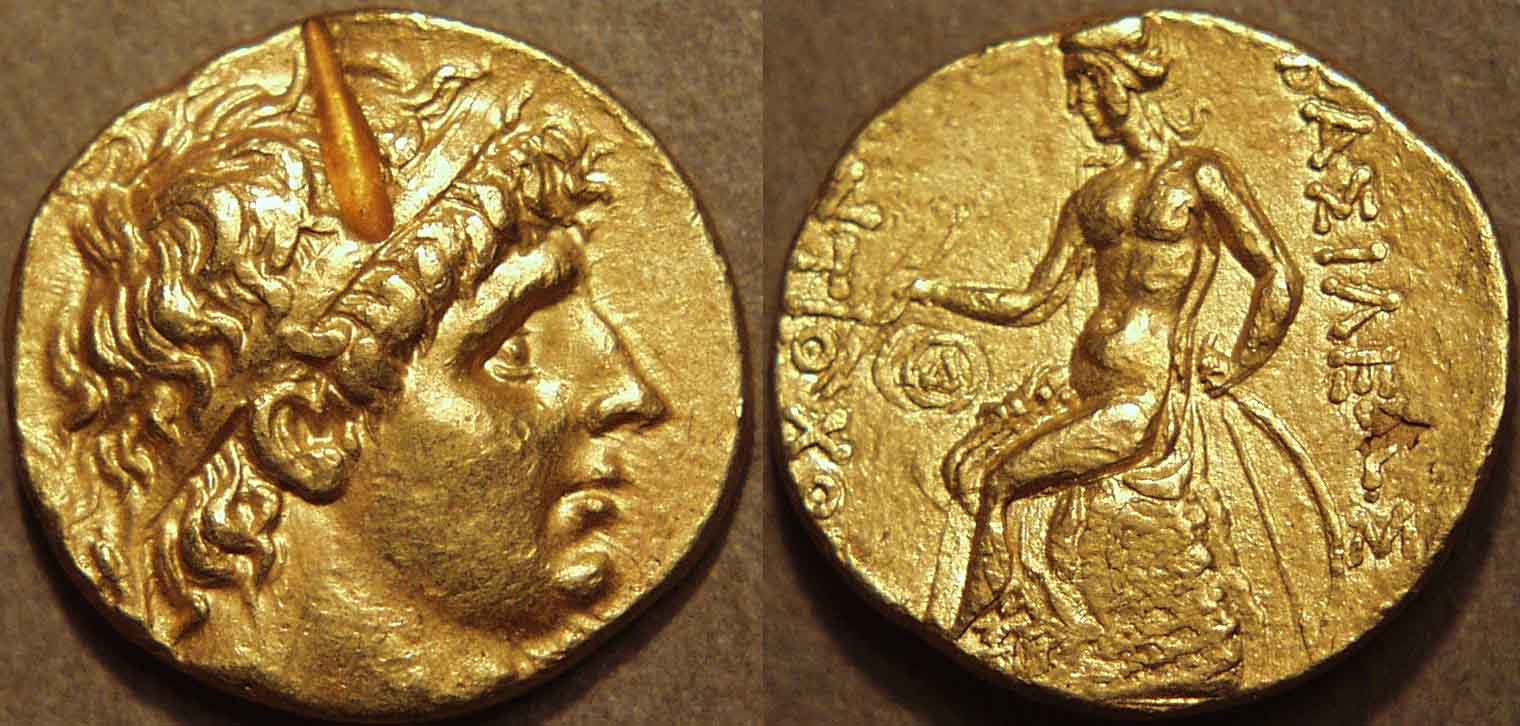
|
Antiochos I
Gold stater, c. 270 BCE
Weight: 8.46 gm., Diam:18 mm., Die axis:6h
Diademed, bust of Antiochos right/
Nude Apollo seated left on omphalos, leaning on bow with left hand,
holding arrow in right hand, Greek legend:
at right: BAΣIΛEΩΣ at left: ANTIOXOY (of King Antiochos)
Δ monogram of Ai-Khanoum in left field
Ref: MIG 58b |
 |
This coin features a test cut on the obverse, a common finding on precious metal coins from India. This coin was reportedly
found in the area of Karur in the state of Karnataka in southern India, suggesting the existence of trade between the Seleucids and the Indian south. |
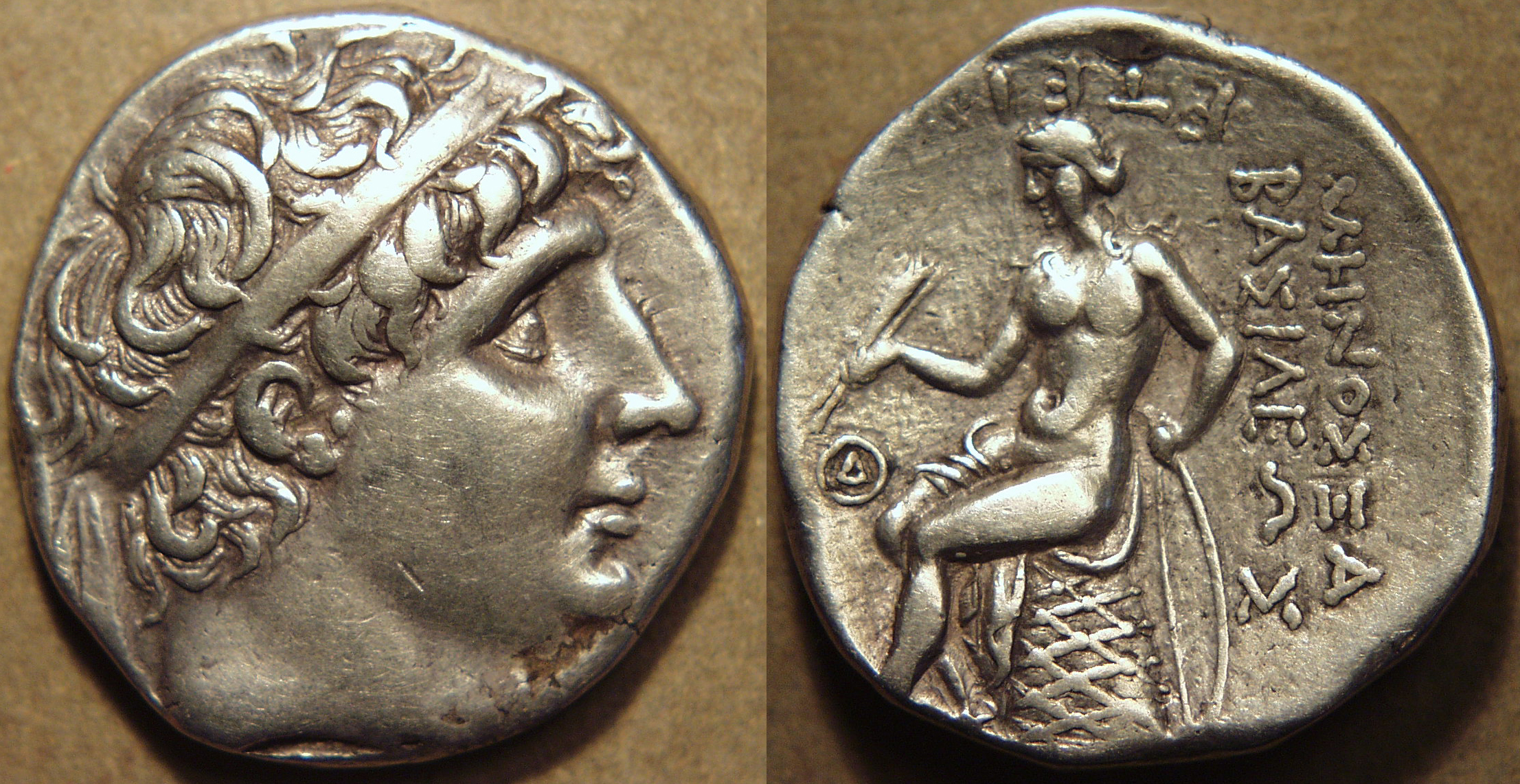
|
Antiochos I
Silver tetradrachm, c. 270 BCE
Weight: 16.94 gm., Diam:26 mm., Die axis:6h
Diademed, bust of Antiochos right/
Nude Apollo seated left on omphalos, leaning on bow with left hand,
holding arrow in right hand, Greek legend:
at right: MHNOΣ ΞA // BAΣIΛEΩΣ above: ETEI
Δ monogram of Ai-Khanoum in left field
Ref: Senior & Houghton ONS Newsletter 159 (1999), pp. 11-12 |
 |
A remarkable and, so far, unique coin. It is the only early Seleucid coin to have a date (many later Seleucid coins did have
dates). It specifies the month Xandikos (March) and the year EI (15). We are not sure what this date signifies, but it is clear that this coin was issued to mark the change in
coinage from the horse-head reverse to the Apollo reverse at Ai-Khanoum, since it was clearly cut by the same celator who cut the first regular tetradrachms with the Apollo reverse
(see the next coin for an example).
What might this change of coinage have signified? If the year 15 represented the 15th year of Antiochos's reign, the date would be March 266 BCE. We know that in 267 BCE,
Antiochos had his son Seleucos put to death on suspicion of rebellion and subsequently appointed his younger son, Antiochos II, his viceroy in the East. This coin could then
possibly mark the arrival of the new viceroy in Ai-Khanoum.
(My thanks to Chris Bennett for help in understanding the coin.) |

|
Antiochos I
Silver Tetradrachm, c. 270 BCE
Weight: 17.00 gm., Diam: 25 mm., Die axis: 6 o'clock
Diademed, bust of Antiochos right/
Nude Apollo seated left on omphalos, leaning on bow,
and holding arrow in his right hand,
Greek legend: BAΣIΛEΩΣ ANTIOXOY
Ref: MIG 59c |
 |
This series was the standard one for Antiochos, featuring his favored deity, Apollo, on the reverse. It is possible he commenced
this series after becoming king. |
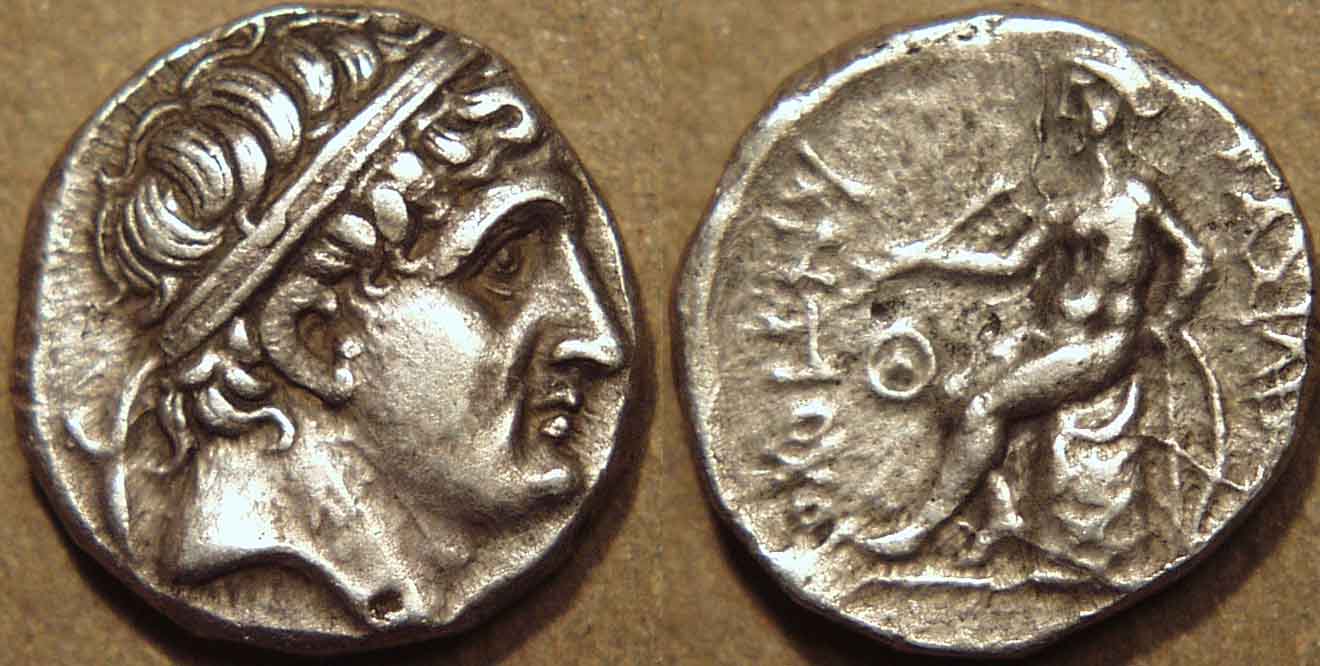
|
Antiochos I
Silver drachm, c. 270 BCE
Weight: 4.12 gm., Diam: 15 mm., Die axis: 5 o'clock
Diademed, bust of Antiochos right/
Nude Apollo seated left on omphalos, leaning on bow,
and holding arrow in his right hand,
Greek legend: BAΣIΛEΩΣ ANTIOXOY
Ref: MIG 60a |
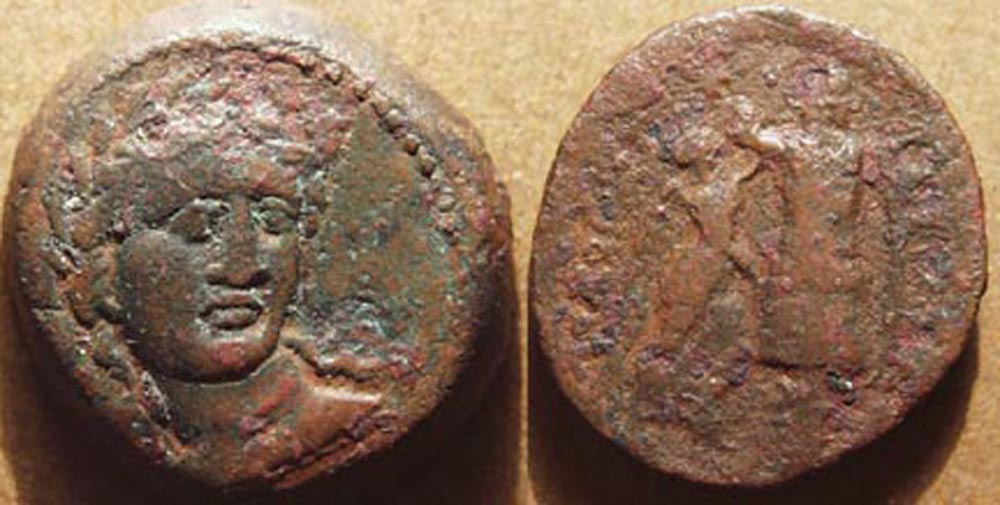
|
Antiochos I
AE Dichalkon, c. 270 BCE
Weight:8.45 gm., Diam:20-22 mm., Die axis:6h
Three-quarter facing laureate head of Apollo/
Nike raising a trophy
Greek legend: BAΣIΛEΩΣ ANTIOXOY (of King Antiochos)
Ref: ANS 61 |
 |
In this coin, we see a beautiful rendition of the Greek God Apollo, who was to become the main deity on Antiochos's later
coinage. |
|